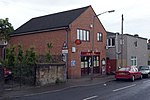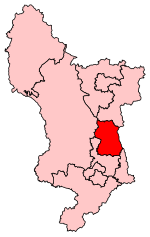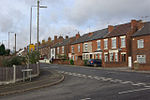Amber Valley
Amber ValleyBoroughs in EnglandNon-metropolitan districts of Derbyshire

Amber Valley is a local government district with borough status in the east of Derbyshire, England, taking its name from the River Amber. Its council is based in Ripley. The district covers a semi-rural area lying to the north of the city of Derby. The district contains four main towns whose economy was based on coal mining and remains to some extent influenced by engineering, distribution and manufacturing, holding for instance the headquarters and production site of Thorntons confectionery. The seat in the House of Commons of Amber Valley is of smaller scope. The village of Crich and other parts of the district were the setting for ITV drama series Peak Practice.
Excerpt from the Wikipedia article Amber Valley (License: CC BY-SA 3.0, Authors, Images).Amber Valley
Church Lane, Amber Valley
Geographical coordinates (GPS) Address Nearby Places Show on map
Geographical coordinates (GPS)
| Latitude | Longitude |
|---|---|
| N 53 ° | E -1.4 ° |
Address
Church Lane
Church Lane
DE7 6BB Amber Valley
England, United Kingdom
Open on Google Maps











